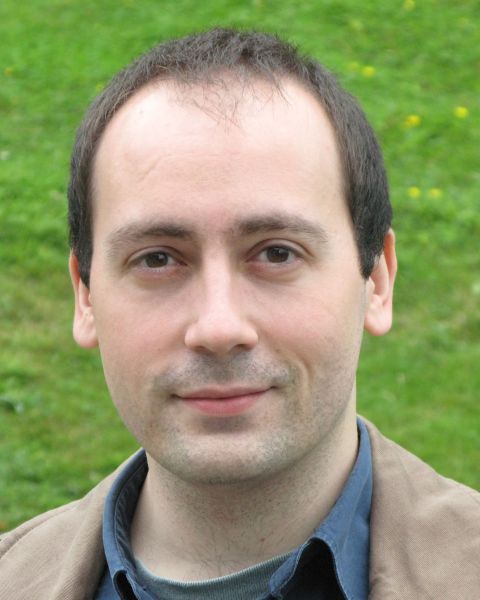Celestino Creatore

Dr Celestino Creatore
Postdoc in Dr Chin's group
Office: 504 Mott Bld
Phone: +44(0)1223 3 37395
Email: cc619 @ cam.ac.uk
TCM Group, Cavendish Laboratory
19 JJ Thomson Avenue,
Cambridge, CB3 0HE UK.

Research
The main focus of my research to date has been the analysis of the interaction between light and matter in various contexts of condensed matter physics: from semiconductor nanostructures to scenarios relevant to Photonics, Quantum Optics and cavity-QED. Building on this background I have recently decided to broaden my interests and started investigating how light-matter interaction can be manipulated/controlled at the nanoscale and then exploited to design novel models of quantum technologies relevant to the fields of Photovoltaics and Thermodynamics.
My current research activities are:
- Investigation of quantum effects for applications relevant to artificial photosynthesis.
- Thermodynamics of quantum heat engines.
- Non-equilibrium many-body phenomena in QED coupled cavities.

In Plain English
Heat engines convert heat (thermal energy) into mechanical energy, which is used to perform mechanical work. In the simplest configuration, this is achieved using a couple of thermal reservoirs, an hot and a cold sources, in contact with a working substance (e.g. a gas or a liquid). Heat engines have been intensively studied since the beginning of the industrial revolution, with the aim to enhance their efficiency, i.e their ability to perform work. Recently, an increasing attention has been devoted to understand the working principles of heat engines whose working substance is a quantum system, i.e a system characterised by quantised/discrete energy levels, consisting e.g. of artificial atoms or quantum dots. The realisation of a QHE was first conceived in the 1960s by Scovil and Dubois, who showed the equivalence between the classical Carnot engine and a three-level quantum system (a maser) coupled to two thermal sources. However, it took more than fifty years to recognise that QHEs could exhibit new and intriguing thermodynamic effects with potential applications ranging from quantum optics to solar energy harvesting.
My research activity is focused on developing novel schemes of quantum heat engines. In particular, I am working on thermodynamic implementations that can be used to design a new class of solar energy harvesting devices (e.g. solar cells) driven by quantum effects. Indeed, a photocell can be described in terms of a thermodynamic heat engine in which a "hot" thermal bath represented by the solar energy is (partially) converted into useful work through the production of high energy electrons used for current/power generation. A fascinating direction I am currently exploring draws on the utility of the QHE framework and is inspired by the nanoscale architecture of biological photosynthetic complexes, which, under certain conditions, behave as highly efficient heat engines.
Featured Publications
- Observation and coherent control of interface-induced electronic resonances in a field-effect transistor Nature Materials (2017)
- Programming light-harvesting efficiency using DNA origami NanoLetters (2016)
- Emergent models for artificial light-harvesting Frontiers in Materials 2:6 (2015)
- Quench dynamics of a disordered array of dissipative coupled cavities Proc. R. Soc. A 470 20140328 (2014) arXiv:1405.3889v2
- Efficient biologically inspired photocell enhanced by delocalized quantum states Phys. Rev. Lett. 111 253601 (2013) arXiv:1307.5093v1
- Adiabatic state preparation of interacting two-level systems. Phys. Rev. Lett. 109 043002 (2012) arXiv:1202.6626v2
- Creation of entangled states in coupled quantum dots via adiabatic rapid passage Phys. Rev. B 86 155442 (2012) arXiv:1112.5964v2